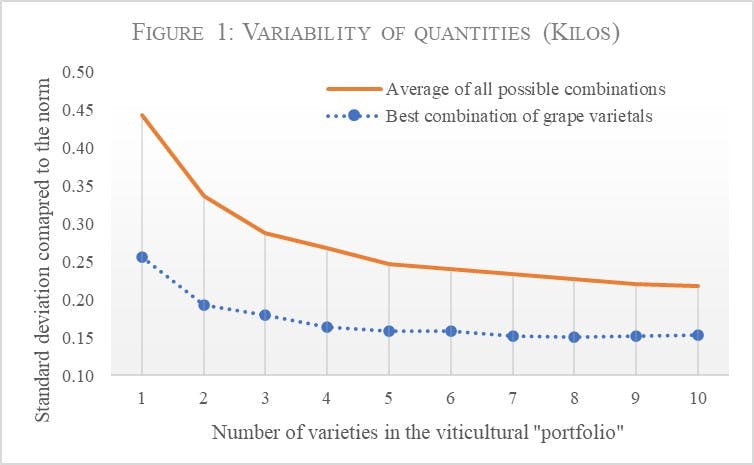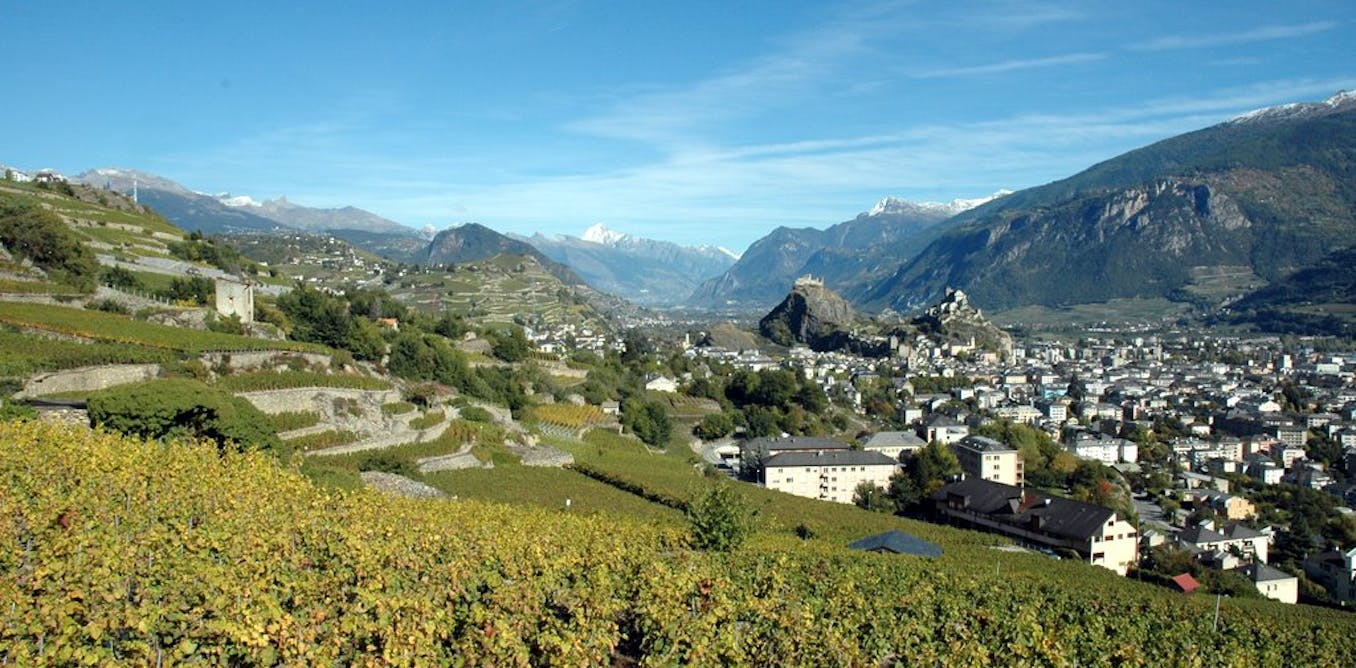Climate change is increasingly felt globally, and the wine industry is no exception. In vineyards, global heating is synonymous with increased frost and hail, droughts, fires and disease.
This is problematic when we know the production of high-quality grapes requires consistent weather conditions. The growth cycle of a vine spans from April to September, and each stage depends on different weather conditions. For example, sunny and warm weather is essential during flowering and fruit set, while sun with moderate rain and marked day/night temperature differences are ideal during maturation.
The biggest climate risks facing the wine sector
Each vintage is at risk of climate hazards, leading to unpredictable variations in quantity and quality compared to the historical norm. As a result, winemakers now recognise significant business risks come with the territory, including:
-
Changes in grape growing conditions: disruptions to the seasonal cycle can affect the quality and quantity of grapes harvested. This, in turn, can erode a region’s and producer’s reputation and, by extension, its revenues.
-
Increased pests and diseases: Warmer temperatures provide ideal breeding conditions for disease and pests. In response, winegrowers will typically compensate by dousing cultures with pesticides, hampering sustainability efforts.
-
Water scarcity: Repeated droughts can limit irrigation and force producers to invest in expensive water management methods.
-
Vineyard relocation: Some wine regions may become unsuitable for growing grapes, ultimately prompting producers to relocate elsewhere. In turn, increased competition for newly hospitable regions for grape growth puts additional pressure on revenues.
In addition to these direct effects, climate change can drive up the cost of inputs such as energy, water, and labour, reducing producers’ profitability.
Overall, the economic consequences of climate change for wine producers appear complex. Might it be possible for producers to mitigate these impacts by resorting to more creative practices?
Up to 40% of losses avoided
To answer this question, we turn to the Canton of Valais, Switzerland’s most prolific wine-making region located in the country’s south. The area is reputed for its international grape varieties, syrah and pinot noir in particular, but above all for its local stars, such as the petite arvine, amigne, or cornalin. Overall, more than 50 varietals exist in the region.
Valais makes for a promising case study for at least two reasons. First, the region produces a large array of red and white grape varieties. This factor sets it apart from French vineyards, where AOC rules limit the varieties that can be used. Second, the Valais grape varieties react differently to climatic hazards. Syrah, for example, allows for a drier climate, whereas pinot noir require cooler temperatures. Gamaret, on the other hand, is more pest resistant. Our question is therefore whether a diversified portfolio of grape varieties could reduce climate risk.

Author provided
As seen in Figure 1 above, winemakers growing one type of grape face a 1 in 3 chance that the harvest will vary by more than 44%. However, the risk drops as winemakers grow more varieties. The first blue dot on the left shows that choosing pinot noir, a type of grape that is more consistent over time, lowers climate risks. Boasting a mix of grape varieties slashes risks even further.
With four different varieties, it is possible to reduce by 40% the variability of the quantities produced. The continuous line progressively decreases from 0.44 to 0.27 when the number of varieties increases from 1 to 4. The risk is halved when producing eight randomly selected grape varieties. The dashed line in the figure shows that it is possible to reduce the risk even more if the grape varieties are chosen with particular care: combining four white and red, late and early varieties can reduce the climate risk by almost two thirds.
Figure 2 focuses on the variation in Oechsle degrees, which estimates the ripeness of grapes and predicts the eventual alcohol content of a wine produced. As such, Oesle degrees are considered a quality indicator. Certainly, other dimensions define a great wine. Nevertheless, to make good wine, one must harvest grapes at maturity and, therefore, with enough sugar. The figure shows that working with multiple grape varieties reduces the risk of suffering from a lack of maturity or excessive maturity. The results are similar to those in Figure 1, except that the vertical axis contains lower values. This shows that quality variations are smaller than quantity variations. This is explained by the fact that it is possible to modulate the harvest dates to obtain grapes with sufficient maturity.

An example to follow?
Our research confirms regions that allow the growth of different grape varieties are better equipped to face off climate risks and could serve as an example for others. Benefits include:
-
Increased resilience: By planting grape types with varying tolerance to environmental stressors, producers increase the resilience of vineyards to changing climate conditions. For example, if one variety is impacted by a heatwave, another may still produce a high-quality crop.
-
Improved crop quality: Different grape varieties have different flavour profiles, sugar levels, and acidity, resulting in more interesting wines.
-
Protection against disease: Producers can reduce dependence on a single variety and protect vineyards against disease outbreaks.
-
Adaptability to changing conditions: By drawing from different grape varieties, producers can ready their vineyards to erratic weather patterns and ensure their long-term viability.
-
Market diversity: By tapping into a broader market, producers reduce economic dependence on a single variety. This reduces market fluctuation risk and ensures a stable income stream.
The diversification strategy is not without its obstacles, however.
Different grape varieties have different soil requirements. If these aren’t attended to, they may not grow as well. Some grape varieties also take longer to mature, impacting overall productivity. To tackle these challenges head on, transitioning producers will have to invest in equipment, labour, and other resources, sometimes at a hefty cost.
Not to mention that consumers may end up not generating sufficient demand even if one has overcome these challenges. It is therefore crucial for winemakers to carefully consider these issues as they embark onto a diversification strategy, starting off, perhaps, with an in-depth feasibility study.




